I came from pop, not from pure blues, and I didn’t have any real programmatic intentions at the time. I think my stuff has a little bit to do with blues, not in the sense of certain musical scheme, or in the sense of Black music, but as a general attitude towards life that everybody can relate to.
-Hans Reichel
I think the musical saw is a fascinating instrument.
In 1919, Clarence Mussehl from Fort Atkinson, Wisconsin, was a key figure in the history of the musical saw:
By experimenting with thinner, more flexible steel, Mussehl created better resonance and smoother vibrato saws capable of producing 16-20 distinct notes, making it more viable as a performance instrument. By 1921, Mussehl started producing specially designed musical saws under his company Mussehl & Westphal, which remains prominent in the field today - here’s their website.
The first time I recall hearing a musical saw played was on Jimmie Rodgers’ song Home Call, recorded for Victor Records in 1929:
Interestingly, the musical saw is designated in the Hornbostel-Sachs system of musical instrument classification in the friction idiophones category.
Years later, I heard the musical saw again. This time by Detroit drummer Roy Brooks. Here he is busy at work on the saw with a mallet:
You can hear that effect on Jeffuso from Brooks’ Duet in Detroit album, playing with Woody Shaw:
He plays the musical saw more traditionally at the beginning and then more directly during his solo at the 9:00 minute mark on the first song from Detroit bassist Hakim Jami’s Hakim Jami and the Street Band Volume 2, recorded live in 2004 at WDET FM in Detroit, Michigan, released on the Jami’s Reparation Records label:
Interestingly, also found in the friction idiophones category of the Hornbostel-Sachs system of musical instrument classification is the Daxophone, invented in the mid-1980s by German musician Hans Reichel.
Even before Reichel invented the Daxophone, he was an innovative guitar player already part of the European avant-garde, exploring unknown shores with eyes wide open.
This week on that Big River called Jazz, we’ll dig in our paddles and explore the world of Hans Reichel.
Hans Reichel was born in Hagen, West Germany, in May 1949. He was a self-taught violinist from the age of seven. At fifteen, he started playing bass guitar in rock and pop groups. He later moved to nearby Wuppertal and worked in many graphics-related professions - illustrator, sign-writer, designer, and type designer. He invented five typeface families, including FF Dax and FF Schmalhans. However, he is perhaps most known as a jazz musician.
In 1970, he began performing in the Wuppertal area as a musician, using unconventional, previously unheard playing techniques on self-designed and built instruments - what he called "very weird guitars." He sent a tape recording of his guitar music to a jury at a German Jazz Festival in Frankfurt and was invited to appear in a special concert for newcomers.
Between April and June 1973, he recorded his first solo album, Wichlinghauser Blues, released that same year by the FMP label:
All tunes were taped as played on his homemade 11-string guitar with 3 pickups, except the first one, which uses a conventional acoustic guitar. You can hear some of these tunes here:
In October 1975 in Berlin, he recorded his second album, Bonobo: Eleven unexpected guitar pieces by Hans Reichel:
You can see from the album’s back cover the basic construction of his custom guitar: saw the necks off two guitars, throw the bodies in the garbage, join the two necks together over a set of pickups to make one long neck, and amplify it very loudly:
The album was recorded in Berlin in October 1975 and released on the FMP label. Again, all the music is heard as it was played, except Bonobo II, which uses multi-tracking:
My favorite Reichel release is Bonobo Beach: Some More Guitar Solos, recorded in Wuppertal in April 1981 and released that year on the FMP label:
Reichel designed the album’s back cover, showing his various very weird guitars. He added the note in the upper left corner: “For people who are interested:”
This album is a classic. A favorite track from the album is Could Be Nice, Too, which I feature above as the intro music. Another favorite from the album is Two Small Pieces Announced by Cigar Box: b:
For the song, Reichel used an electric pick-up behind the bridge of his guitar that produced a mournful, drone-like sound. It’s incredible to me that he recorded this with no overdubbing.
Here’s a 1986 video of Reichel performing Watching the Shades, a song that appeared on his 1987 The Dawn of Dachsman album:
In the January 1989 issue of Guitar Player magazine, Reichel describes how he builds and plays his custom guitars. The article includes this 7” flexi record:
When approached in 1991 by Sky Ranch Records to make a slide guitar piece for their compilation Slide Crazy!, Reichel recorded at his home, The Truth About C Minor:
Jeff Hunt is an artist, producer, designer, and writer, best known as the founder of the independent recording label Table of the Elements. Since 1992, he has documented some of the most prominent figures in experimental sound, electroacoustic music, free-improvised performance, sonic sculpture, microtonality, and field documentation. In 1993, he released two 7” EPs of Reichel’s music. The first Daxophone on Beryllium TOE-SS-4 and the second Variations on Jay Guitar Series Vol. I on Oxygen TOE-SS-8. These are interesting relics worth further discovery.
Pitchfork describes Hunt’s venture as follows:
The supremacy of Table of the Elements as an unwavering outpost of ultra-experimental strains can be attributed to its concomitant adherence to valiance. Most of the Table of the Elements catalog has no broad commercial appeal, and many of its projects are risky ventures, even with respect to the experimental marketplace. Yet, this philosophy of risk works because everybody associated with the label feels like they're doing important work releasing important records, and they're willing to go for broke to make it happen.
Sometime after Reichel recorded Bonobo Beach: Some More Guitar Solos in 1981, he began a fascinating journey to invent a new instrument, which he called the Daxophone.
According to Reichel, he owned a Swedish LP called Mammal voices of Northern Europe, vol. 1, which featured wolves, rats, bats, fieldmice, and also a badger, which translates in German to Dachs. The badger's great sonic range impressed him, so he named the instrument after it. With echoes of Adolphe Sax and “because I got fed up with having to keep on repeating the story,” he changed the “Dachs” to “Dax.”
Reichel’s Dawn of Dachsman was his first album using a Daxophone. It was recorded in May 1987 at the FMP-Studio in Berlin and released that same year on the FMP label. As per usual, all numbers were taped as played:
Here’s the album. You can listen to the first three songs here. The first song Waiting is wonderful and very different than the other two:
Here’s one more for the road. In this 2009 video from Ulrichsberg, Austria, you can watch Reichel playing one of his home-made Daxphones:
On November 22, 2011, Hans Reichel died suddenly and unexpectedly in his studio. He was 62 years old.
Avant-garde is military jargon, referring to troops sent beyond the front line. Out there, it is lonely and dangerous - things don’t always go well. The same applies in art, and the avant-garde artist suffers the same fate.
In my eyes, Hans Reichel was an avant-gardist to the highest degree. He took a conventional instrument, made it unconventional, and played music never heard before. As a result, he wasn’t always a consistent commercial success. Nevertheless, he did not allow himself to be persuaded to abandon his unconventional ideas and extraordinary concepts for the sake of mainstream appeal. I admire the courage of his conviction.
We were fortunate to have experienced someone of Reichel’s imagination in our lifetime. He was a real pioneer in the art of jazz. I only wish he were more well-known on that Big River called Jazz.
Next week on that Big River called Jazz, we’ll dig our paddles into the waters of the Keith Tippett.
Please hit this link to buy me a cup of coffee if you’d like to show your guide some appreciation for this and past journeys. Know in advance that I thank you for your kindness and support.
If you like what you’ve been reading and hearing so far on our journey and would like to share this with someone you think might be interested in learning more about our great American art form, Jazz, just hit the “Share” button.
From Astaire to Sun Ra: A Jazz Journey is a reader-supported publication. To subscribe, please hit the “Subscribe now” button.
Feel free to contact me at any time to talk shop. I welcome and encourage that.
Until then, keep on walking….




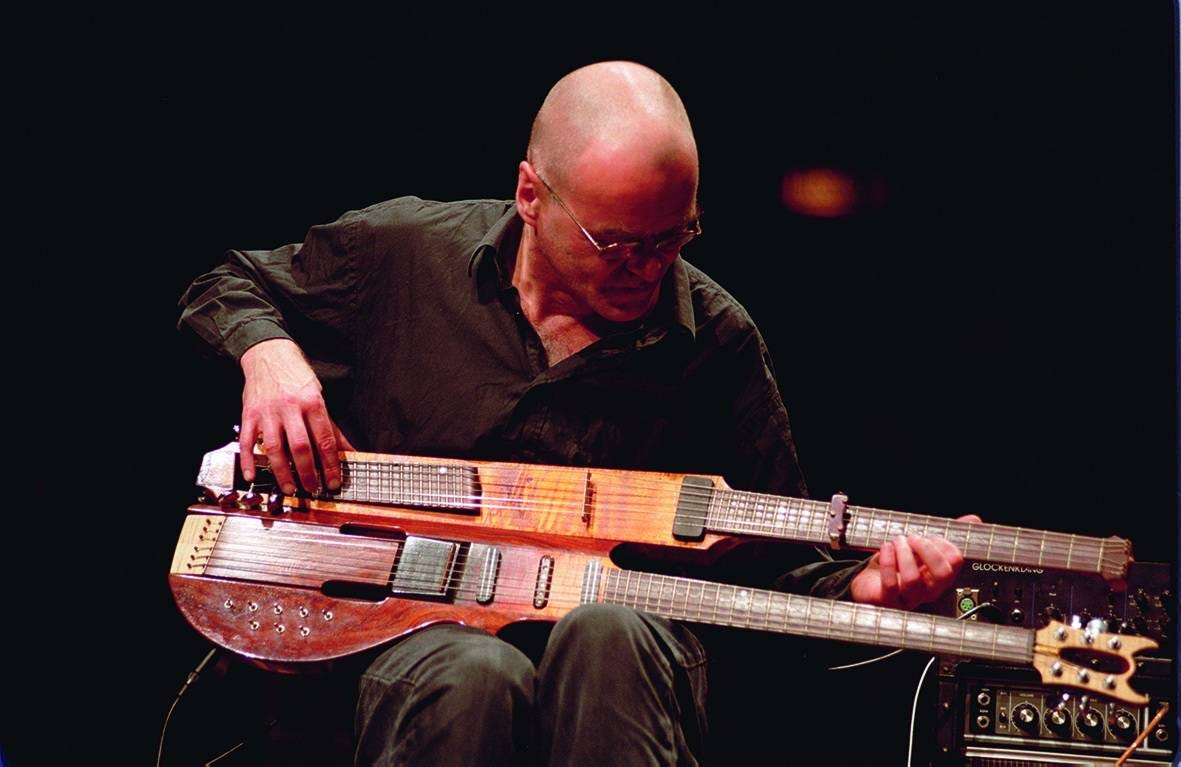

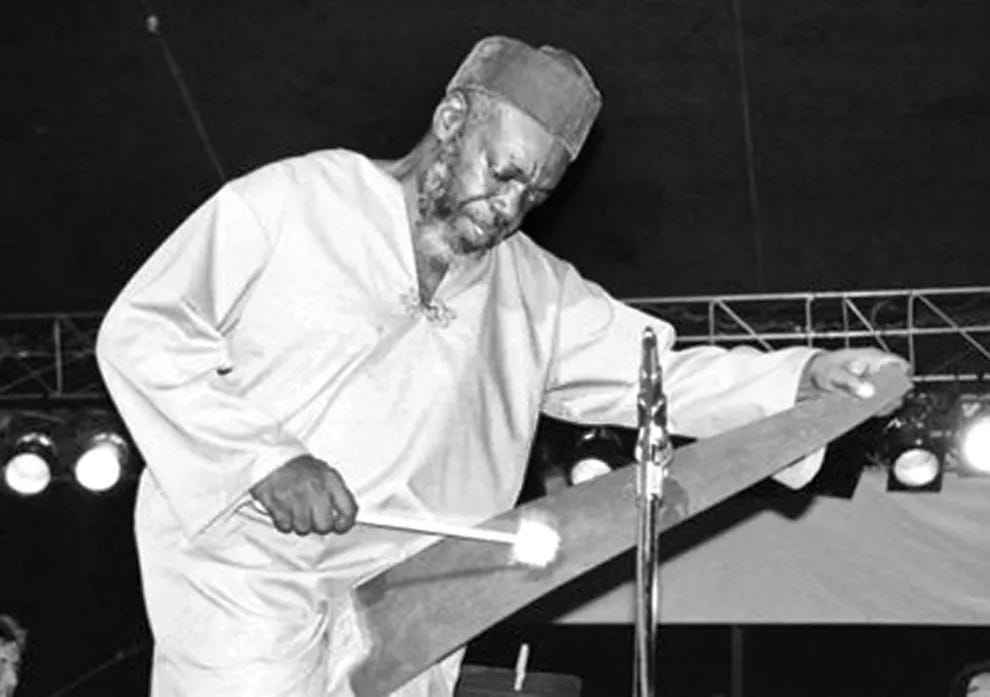
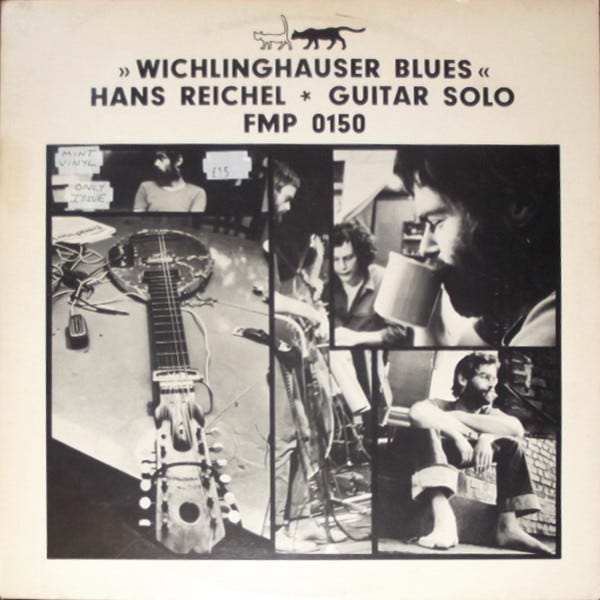
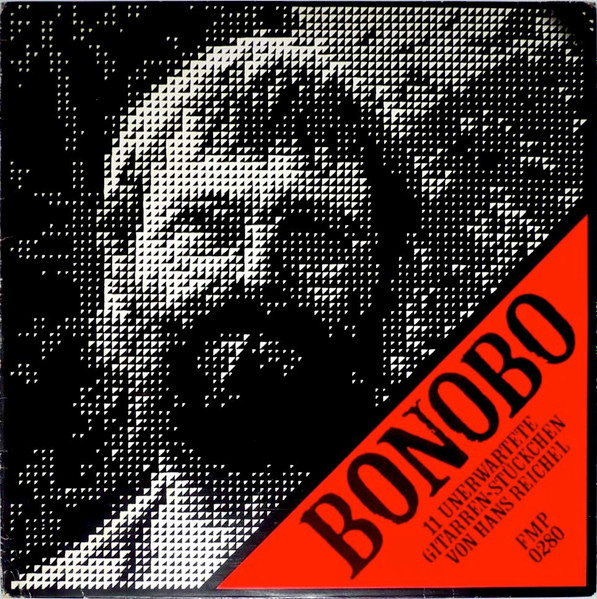

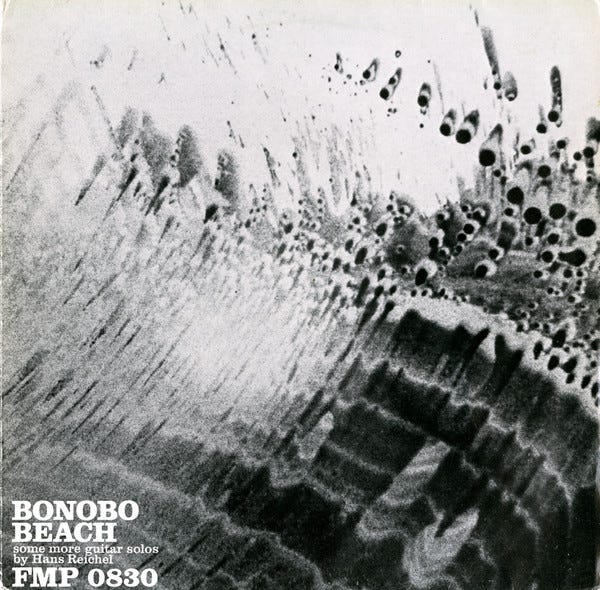

Thanks Tyler - I never knew about the flexidisc, which is terrific! We presented a gig for Hans in Allentown Pennsylvania in the 1980s. A very sweet man, not quite of this world (and that's a compliment). Check out his gig with Fred Frith at PASS from 1981...
Another revelatory post Tyler, thank you. I knew the name as I'm a big fan of FMP but tend to steer clear of guitarists as a general rule (long story). Reichel is definitely a unique player and some of the music sounds almost like a Koto in places. I'm off to discover more.